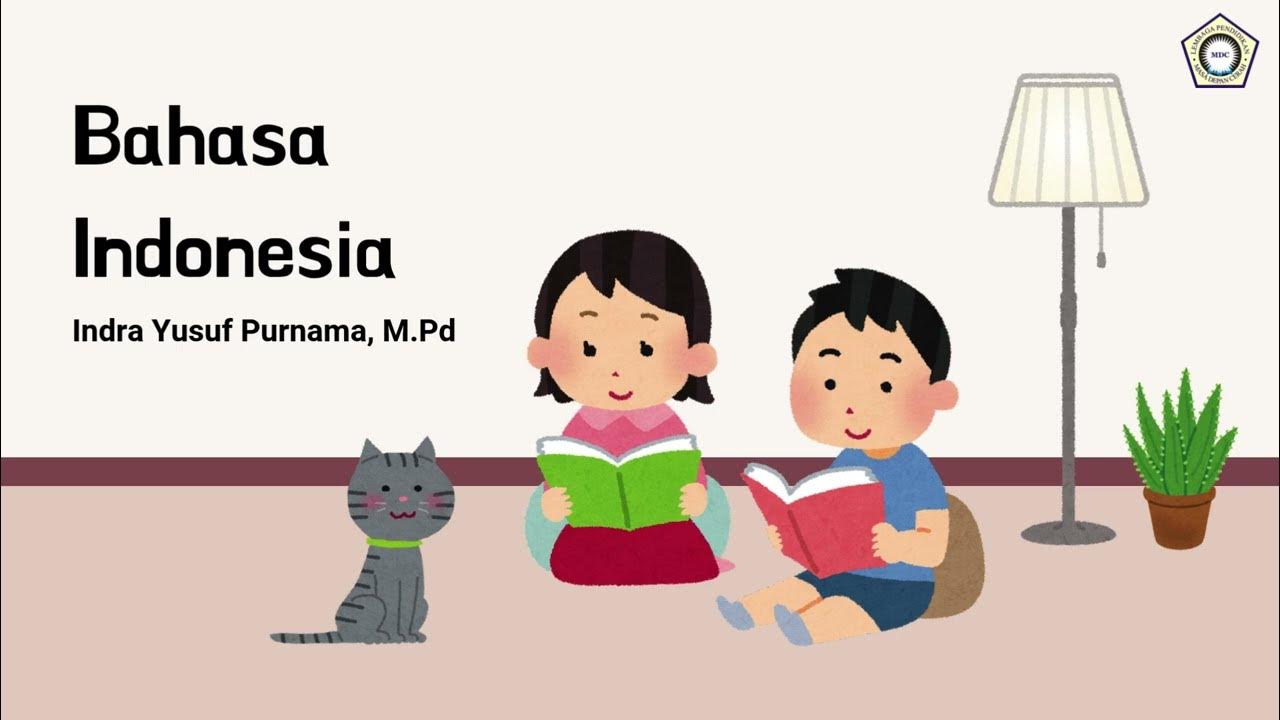VIDEO MATERI 1 INDO 11
Summary
TLDRIn this video, Kak Akila explores the linguistic aspects of argumentative texts. The focus is on various types of conjunctions, such as intra-sentence, inter-sentence, and inter-paragraph, which connect ideas within and across sentences and paragraphs. The video also covers different types of verbs, including original, derived, transitive, and intransitive verbs, explaining their roles and usage. Viewers are encouraged to engage with the material by discussing it with peers or teachers to deepen their understanding. The video aims to enhance the comprehension of key linguistic features crucial for constructing effective argumentative texts.
Takeaways
- 😀 Intra-sentence conjunctions connect elements within a single sentence, like 'and', 'or', and 'but'.
- 😀 Inter-sentence conjunctions connect two standalone sentences, often at the beginning of the second sentence (e.g., 'but', 'besides that', 'then').
- 😀 Inter-paragraph conjunctions link two paragraphs in a text, such as 'therefore', 'thus', and 'besides that'.
- 😀 Original verbs are basic verbs that haven't undergone any changes or affixation, such as 'eats' or 'sleeps'.
- 😀 Derived verbs have undergone changes or affixation, such as 'reads' (from 'read') or 'writes' (from 'write').
- 😀 Transitive verbs require an object to complete their meaning, like 'reads a book' or 'writes a letter'.
- 😀 Intransitive verbs do not require an object to complete their meaning, such as 'sleeps' or 'runs'.
- 😀 The use of different types of conjunctions is essential for building coherence and logical flow in argumentative texts.
- 😀 Understanding the types of verbs (original, derived, transitive, intransitive) is crucial for constructing clear and grammatically correct sentences.
- 😀 Practicing the material through discussions with classmates or teachers helps reinforce understanding of linguistic aspects in argumentative texts.
Q & A
What is an intra-sentence conjunction?
-An intra-sentence conjunction is a conjunction that connects elements within the same sentence. For example, 'I bought a book and a pencil' or 'You can choose an apple or an orange.'
How is an inter-sentence conjunction different from an intra-sentence conjunction?
-An inter-sentence conjunction connects two standalone sentences, often placed at the beginning of the second sentence. For example, 'I studied hard, but the results were not satisfactory.'
Can you give an example of an inter-paragraph conjunction?
-An inter-paragraph conjunction connects two paragraphs. For example, 'Therefore, climate change is getting worse; therefore, we must take more serious action to overcome it.'
What is the role of inter-paragraph conjunctions in a text?
-Inter-paragraph conjunctions link ideas between paragraphs to maintain the flow of thought and cohesion in the writing. For example, 'Besides that, pollution also causes major economic losses.'
What is an original verb?
-An original verb is a basic verb that has not undergone any changes in form or affixation. For example, 'eats' or 'sleeps' are original verbs.
What are derived verbs?
-Derived verbs are verbs that have undergone changes in form or affixation. For example, 'reads' from 'read' with the prefix 'me-', or 'writes' from 'write' with the prefix 'me-'.
What is the difference between transitive and intransitive verbs?
-Transitive verbs require an object to complete their meaning, such as 'reads a book.' In contrast, intransitive verbs do not need an object, such as 'he sleeps' or 'the children run.'
Could you provide an example of a transitive verb?
-An example of a transitive verb is 'reads' in the sentence 'He reads a book.' The verb requires an object (a book) to complete its meaning.
What is the function of conjunctions in argumentative texts?
-Conjunctions help to connect ideas, clauses, or sentences, providing structure and coherence in argumentative texts. They allow smooth transitions between thoughts, whether they are in the same sentence, between sentences, or across paragraphs.
Why is it important to understand the linguistic aspects of argumentative texts?
-Understanding the linguistic aspects of argumentative texts helps in creating clear, well-organized, and persuasive arguments. By knowing how to use conjunctions, verbs, and sentence structures properly, writers can make their points more effectively and coherently.
Outlines

このセクションは有料ユーザー限定です。 アクセスするには、アップグレードをお願いします。
今すぐアップグレードMindmap

このセクションは有料ユーザー限定です。 アクセスするには、アップグレードをお願いします。
今すぐアップグレードKeywords

このセクションは有料ユーザー限定です。 アクセスするには、アップグレードをお願いします。
今すぐアップグレードHighlights

このセクションは有料ユーザー限定です。 アクセスするには、アップグレードをお願いします。
今すぐアップグレードTranscripts

このセクションは有料ユーザー限定です。 アクセスするには、アップグレードをお願いします。
今すぐアップグレード関連動画をさらに表示

Teks Argumentasi | Bahasa Indonesia SMA

Bahasa Indonesia PB Akhir - Pengenalan Teks

TEKS PERSUASI KELAS XI SMA/SMK KURIKULUM MERDEKA

ARGUMENTATIVE WRITING - Pengertian, Generic Structure, Contoh Argumentative #TEXTTYPE 01

Structural Elements|ARGUMENTATIVE TEXTS|| GRADE 10 || MELC-based VIDEO LESSON | QUARTER 2 | Module 2

Materi Teks Argumentasi Kelas 11 l Bahasa Indonesia
5.0 / 5 (0 votes)
